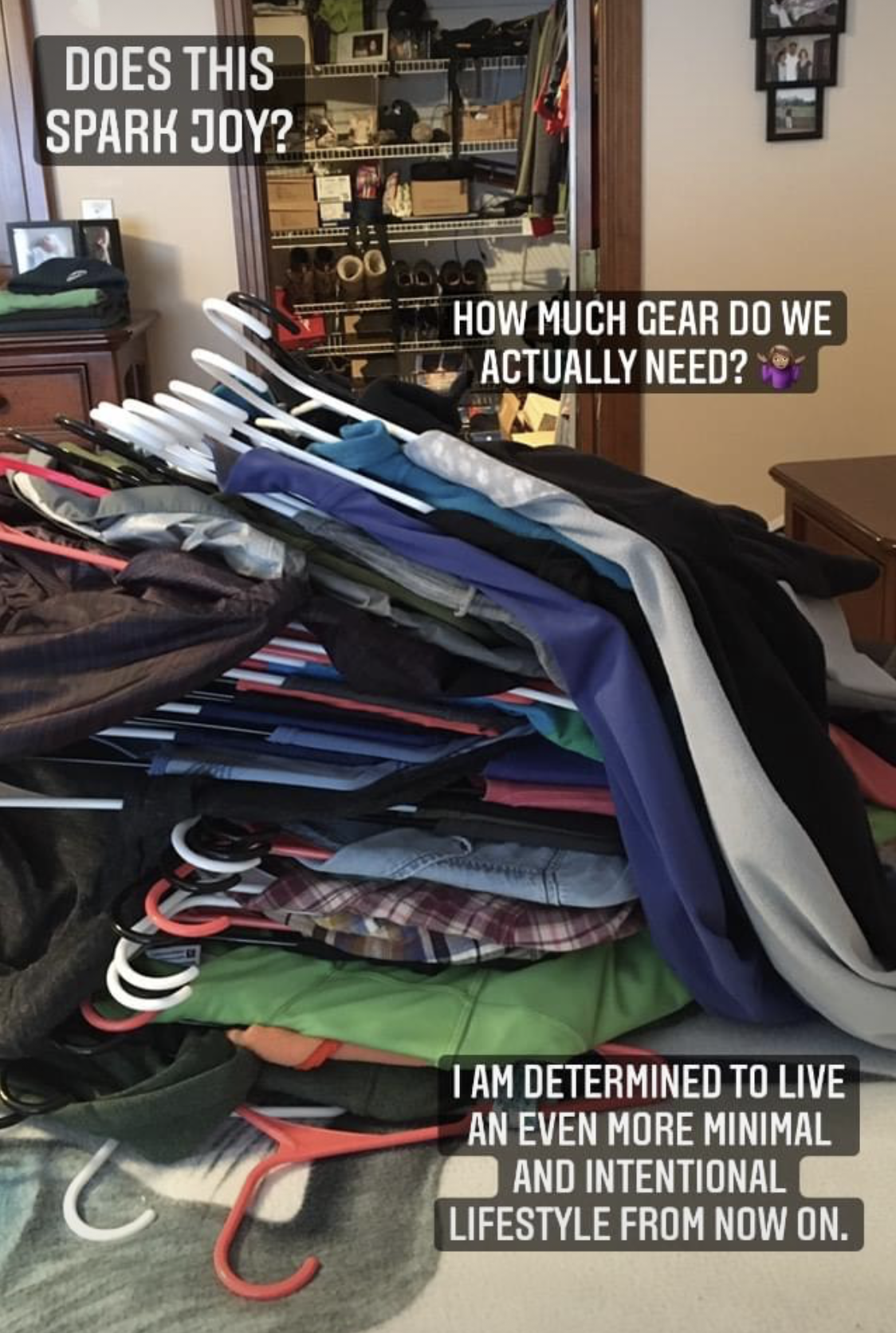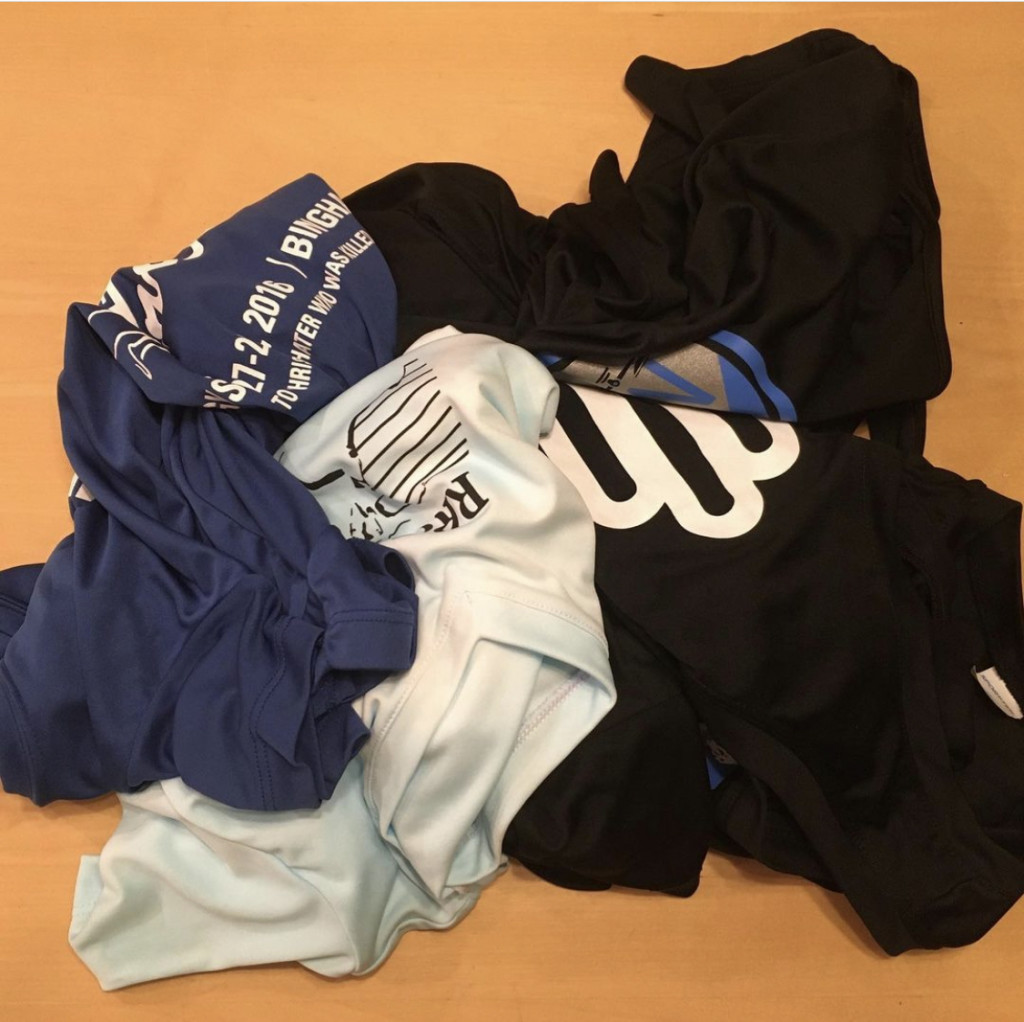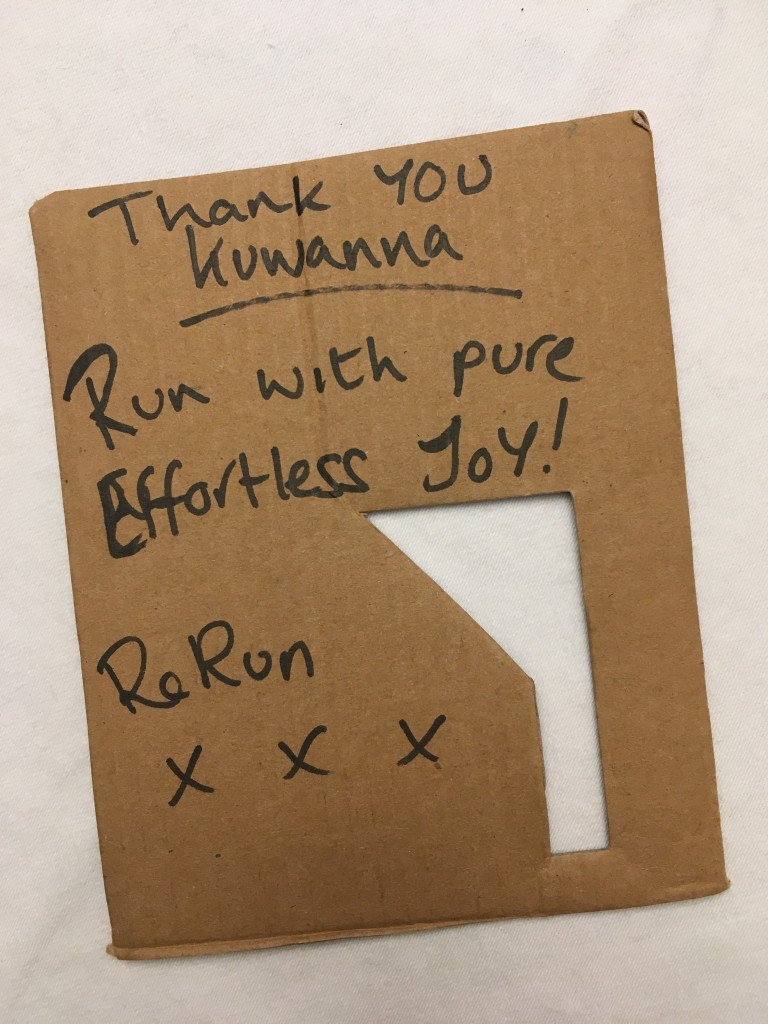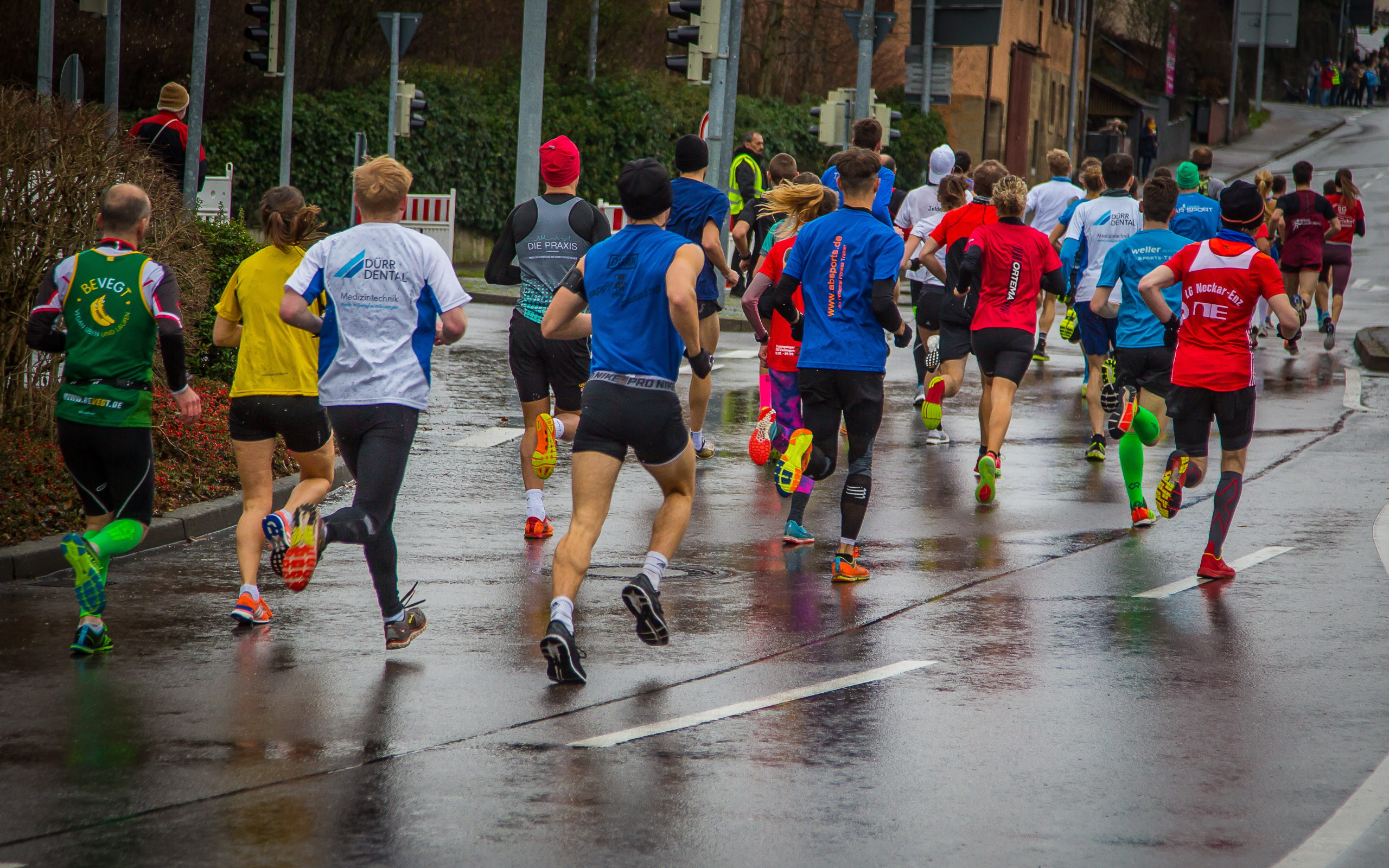Too Much Gear
Running, at its foundation, is a minimalist activity. Yet through the choices we make, we are rewriting this narrative. And we are changing the story at the detriment to our environment.
At its roots, running is an inexpensive and minimalistic activity. To run, you need your legs and feet…perhaps a pair of comfortable shoes to protect those feet, and for some of us, a sports bra. Yet with so many clothing brands promising the best of comfort and efficiency, shoe brands promising a super cushioned ride, a faster ride, or a grippier ride, even all of the above, and gear brands touting the best in the business, we become tempted to invest in the latest products with the promise of becoming “better” runners. We then repeat this process every season, as each new year brings fresh colors and new trends in whatever we already own. We may see pro runners we emulate on social media wearing gear representing the brands that support them (read: financially, i.e. their gear is free to them). Wanting to be more like the runners we admire, we may then be tempted to purchase a shirt or shorts they wore in a photo garnering hundreds of likes, as we may even go as far as to buy the shoes because maybe the shoes they wear will make us faster and more liked too (oh the power of advertising).
Challenges to Minimalism:
For many runners, minimalism is appealing but may be a challenge.
Shoes wear out and poorly-made clothing and race shirts may pile, fade, or become outdated. We replace these with new gear while storing away the old. You may change shoe brands as your needs change and some runners may become sponsored athletes or ambassadors. Many of these runners eventually change sponsorships or ambassadorships. What then, becomes of the old clothing and gear?
Runners register for races offering swag, typically in the form of a race t-shirt. But after the fifth race you discover you have five new shirts, several of which remain unworn because they fit poorly or do not fit your taste. While some swag may fill you with nostalgia and allow you to reminisce about a certain race, and some race shirts may even become favorites to train in, too many of the race tech shirts acquired are never actually worn. After a few years, closets begin to fill up. Desperate for space, you may eventually drop off a box to a charity organization. But who is actually going to wear all your old race shirts?
Ambassadorships may pose additional challenges to minimalism. There is no shortage of ambassador swag, some free to brand ambassadors and some available at discounted prices. Some brands send their ambassadors care packages several times a year filled with fresh new gear to support a particular movement or promotion, but oh my gosh! Who could possibly wear all that clothing if we’re being honest with ourselves?? So, brand ambassadorships are another area where we need to consider our choices, selecting only what we need to represent a company. Turns out you don’t need a ton of stuff to represent a company. You just need to wear and showcase what you have.
Environmental Cost:
Many tech shirts are made from synthetic fibers, including polyester, which is sourced from plastics (virgin and recycled). These polyester shirts cannot be recycled and many end up in the landfill. Once plastic bottles are recycled into a tech shirt, the plastic in that shirt is no longer recyclable and can only be landfilled once it reaches the end of its life. Plastic bottles can be recycled into more plastic bottles, but plastic shirts recycled from plastic bottles become trash. Moreover, the market is flooded with tech shirts, as companies continue to produce more, working to keep pace with consumer demand. Notably, the plastic used to manufacture polyester fibers is sourced from petroleum (Van Winkle et al., 1978; Palacios-Mateo et al., 2021). (Plastic bags and bottles are also sourced from petroleum.) Manufacturing more tech shirts from plastics increases demand on petroleum resources, while tossed, unwanted tech shirts place increased demand on landfills. Excessive washing of polyester shirts also sends microfibers into our water supplies (De Falco et al., 2019; Palacios-Mateo et al., 2021), where they are consumed by fish and other marine life, to their detriment…and to ours. What are YOU having for dinner??
And what about online clothing and gear returns? What happens when an item you ordered online does not work out for you? According to BBC Earth, many clothing and shoe returns are incinerated or landfilled upon receipt. Many companies destroy clothing because it’s cheaper than inspecting, repressing, repackaging, and restocking returned items. According to NPR, retailers throw away an estimated 25% of returns. In 2020, returns may have led to an additional 5.8 billion pounds of landfill waste in just that year (Optoro) and shipping those returns alone contributed 16 million metric tons of carbon dioxide emissions (Eco Watch). For those runners who “bracket” their online purchases – i.e., buy that coveted shirt in several sizes to try them on, then return the sizes that don’t fit – in many cases, those shirts you send back don’t get restocked. Instead they get – you guessed it – incinerated or landfilled. According to CBC News, the fashion industry is the second largest polluter in the world, second only to the oil industry. So, as we’re working to reduce our dependence on fossil fuels, let’s consider not only the gasoline in our cars, but also the plastics sourced from petroleum used to make our gear and the plastic bottles that (may) get recycled into shirts. Let’s also consider the incineration of our returns and landfilling of our unwanted gear, not to mention the coal burned to create the electricity to power all this in the first place. Because all of it matters.
Some Alternative Approaches:
First and foremost, it begins with each one of us.
Learning more of the environmental footprint of clothing manufacture/disposal in the past several years, as well as sweatshop abuses, I made the decision to run predominately in second-hand clothing. These days I personally run in Patagonia clothing, most of which has been purchased second-hand or traded for. Patagonia clothing and gear are fair trade certified, with clothing factory workers being paid a living wage and clothing materials being sourced sustainably. I’ve tried to own a minimal number of items and have used clothing swaps in the past when I needed something new. Goodwill, Salvation Army, Thrifty Shopper, Plato’s Closet, and online thrift retailers such as Poshmark, Mercari, ThredUp, and eBay all offer TONS of options too. With second-hand clothing, there is decreased demand for sweatshops and virgin materials, and as a result, there is less strain placed on the environment for these materials and less demand for cheap labor. (Just remember that as soon as you buy online, there’s the carbon footprint of shipping and packing materials to consider.) For those who are not feeling the idea of running in previously-owned gear, I get it. To you I say, just own less, and buy only what you need. Buying new only when you need something can potentially be more sustainable than thrifting when you don’t!
When buying, purchasing from locally owned stores helps to support local store owners, local communities, and returned items are more likely to be restocked and resold. Purchasing from a local brick and mortar store also bypasses the shipping carbon footprint, not to mention all the packing materials.
And consider mending items needing repair, rather than tossing or donating them. I have sewn a few items to extend their lives, and I find this to be very satisfying and rewarding. And Patagonia will repair their clothing free of charge if it’s something more than you are comfortable handling yourself.
Regarding ambassador gear, I’ve learned to just say “no.” As a brand ambassador, I represent Tailwind Nutrition and Squirrel’s Nut Butter. I quickly learned in my first year representing various companies just how quickly ambassador gear can accumulate. These days, I keep just a couple items for Tailwind and SNB, as well as the Trails Collective, whose singlet I prefer to wear during races.
Regarding race swag… I first learned of ReRun Clothing and Trees not Tees, two UK-based organizations, late in 2020. ReRun Clothing sells and/or upcycles unwanted race shirts, as well as other gear. Trees not Tees works with interested race directors to give runners a choice to opt out of race swag, offering the option to plant a tree in lieu of clothing and race medals. This model allows some runners to opt out of yet another half marathon medal, while not denying the first-time finisher that desired award. Both organizations encourage athletes to carefully consider whether they truly need that extra race shirt. Both organizations inspired me to package up some of my tech shirts, many of which I had never worn, and donate them to ReRun Clothing in 2020. Sadly, these days, even ReRun Clothing has become overwhelmed with race swag donations – clearly a symptom of the fundamental problem – we simply demand and manufacture too much. In addition to these organizations, some race directors such as Matthias Eichler, mastermind behind Rock Candy Running, helped facilitate the planting of 100 trees in 2021, rather than offer race swag he knows all too often does not get used. For every runner, $1 is used to plant a tree in a national forest. In 2022 the goal is 300 trees, perhaps as much as 500 trees, circumstances permitting.
Also, many race directors such as Ian Golden (Red Newt Racing), Krissy Moehl (Chuckanut 50K), and others offer much, if not all their race swag, printed on Patagonia gear. By offering products printed on high quality and sustainably sourced and made clothing, those of us who do build a wardrobe from race shirts (and Patagonia clothing) take home mementos to remind us of the races we’ve run, but ones that fit well, last a long time, and won’t end up in the donate pile.
Another method employed by some race directors to help mitigate the swag issue is offering a shirt “purchase option” for races. For example, two local races in particular, the Skunk Cabbage 10K and Half Marathon in Ithaca (NY) and the Salt Springs Field, Forest & Falls Trail Race in Montrose (PA) offer an optional and separate shirt purchase option for runners. This helps minimize the number of shirts ordered, as well as leftover shirts. Additionally, runners aren’t forced into a shirt they don’t want, and for them, race fees are less. Those who prefer to have a shirt commemorating the event have the option to do so.
My years pinning on a bib and competing in races, as well as more recently being awarded several ambassadorships, have made me realize how quickly gear and swag can accumulate in my own closet. As I learn more about the impact my clothing choices have on our environment, my hope is to continue downsizing my closet and further minimalizing my approach to running, to lessen my demand for petroleum products and the footprint I leave on the Earth’s limited resources. I hope you’ll join me.
Sources:
De Falco, F., Di Pace, E., Cocca, M. et al. (2019). The contribution of washing processes of synthetic clothes to microplastic pollution: Scientific Reports v.9, p. 6633.
Palacios-Mateo, C., van der Meer, Y., and Seide, G., 2021, Analysis of the polyester clothing value chain to identify key intervention points for sustainability: Environmental Sciences Europe, v. 33, no. 2, p. 1-25.
Van Winkle, T., Edeleanu, J., Prosser, E., & Walker, C. (1978). Cotton versus Polyester: Surprising facts on energy requirements for the production and maintenance of clothing made of these two kinds of fibers suggest priorities for the utilization of energy and land. American Scientist, v. 66, no. 3, p. 280-290.
Additional Readings:
https://www.patagonia.com/stories/garbage-bins-for-the-ocean/story-98205.html
https://www.patagonia.com/stories/our-quest-for-circularity/story-96496.html
https://www.patagonia.com/stories/stitch-in-time/story-95186.html
https://www.patagonia.com/stories/mending-life/story-113746.html
Add Comment
You must be logged in to post a comment.









